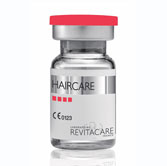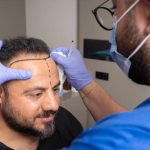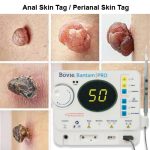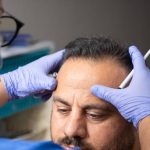
CICATRICIAL ALOPECIA | CAUSE & TREATMENT | HAIR LOSS CLINIC TORONTO
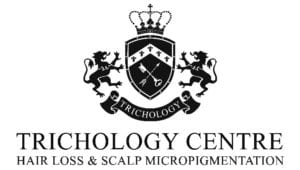
FREE ONLINE HAIR LOSS ASSESSMENT FORM
Are you experiencing any hair loss or scalp issues? Get a Certified Trichologist to assess and help treat your condition in Toronto and Greater Toronto Area. Please complete our online Trichology Assessment Form to get started now.
What is Cicatricial Alopecia?
Cicatricial alopecia, also known as scarring hair loss, is a hair loss condition caused by a group of rare disorders that destroy the hair follicles and replacing them with scar tissue, resulting in permanent hair loss.
Hair loss due to Cicatricial Alopecia in not rare and is seen in about 7% of adult men and women. It is rarely seen in children.
It is characterized by inflammation, progressive hair loss and eventual formation of scar tissue. The scarring is not seen on the scalp but underneath the skin in the hair follicles. Along with the hair follicles the sebaceous glands are also affected. In the areas affected, the skin is bald, smooth, and shiny, and pores are absent because of complete loss of hair follicles.
Cicatricial alopecia is unpredictable. It can occur gradually over time or can come suddenly. It usually starts with a small bald spot which eventually spreads over the scalp. It is often accompanied by pain and itching but not always.
There is scarring and non-scarring alopecia. Cicatricial, (cicatric meaning the scar) is known as a scarring alopecia. With scarring alopecia, the hair follicles are destroyed, and permanent hair loss occurs. With non-scarring alopecia, the hair follicles remain intact even though the hair is lost. Hair usually grows back with non-scarring alopecia.
Cicatricial Alopecia is further classified into primary and secondary types. In either type, there is an inflammation occurring at the hair follicle that causes hair loss and scarring tissue.
Primary cicatricial alopecia is caused by an autoimmune disorder. This is where the immune system attacks the hair follicles perceiving it as an invader, causing inflammation and hair loss.
In secondary cicatricial alopecia, the hair follicles are destroyed by external physical factors such as severe infection, burns, cancer, trauma, radiation and allergens.
Cicatricial alopecias that involve predominantly lymphocytic inflammation include lichen planopilaris, frontal fibrosing alopecia (FFA), central centrifugal alopecia (CCCA), and pseudopelade (Brocq).
Cicatricial alopecias that are due to predominantly neutrophilic inflammation include folliculitis decalvans and tufted folliculitis.
How is Cicatricial Alopecia Treated?
Early diagnosis is essential to the prevention of further hair loss. A scalp biopsy is recommended to confirm the diagnosis. A delay in diagnosis may cause the disease to advance and cause irreversible damage to the hair follicles.
As with all scarring alopecias, there is no cure. Treatment for lymphocytic alopecia treatments can include corticosteroids, and anti-inflammatory medications.
Treatment of Neutrophillic Alopecia (inflammation due to neutrophilis) includes antibiotics to eliminate the infection causing the inflammation. Other treatments include drugs like methotrexate, cyclosporine and isotretinoin.
Minoxidil may be used to stimulate hair growth on hair follicles that has not been permanently damaged. Hair transplantation and SMP Scalp Micropigmentation are other options.

Source: ncbi.nlm.nhi.gov
Micronutrients
The role of diet and nutrition to for hair loss is growing. New evidenced-based recommendations that micronutrients including certain vitamins and minerals have shown positive results. Micronutrients can reduce oxidative stress, an increasingly suspected contributor to cicatricial alopecia. Vitamin D have shown to help modify the immune response by inhibiting Th1 cell proliferation. Current literature has consistently demonstrated lower vitamin D levels in patients with alopecia areata.
Vitamin D – Vitamin D boosts immunity, keeps bones strong and skin healthy, stimulates cell growth, and helps create new hair follicles. Vitamin D deficiency has been linked to hair loss.
Biotin – Biotin is an important coenzyme for carboxylation reactions. Biotin deficiency has been shown to cause hair loss.
Zinc – Zinc is an essential mineral upon which hundreds of enzymes depend for their catalytic activity.
Iron or ferritin – Iron deficiency remains the most common nutritional deficiency in the world, a sign of which includes chronic diffuse telogen hair loss.
Vitamin A or retinoid or retinol – Vitamin A is an essential vitamin for hair follicles. It also helps skin glands make sebum. Sebum moisturizes the scalp and helps keep hair healthy.
Vitamin C – Vitamin C is a powerful antioxidant that helps protect against the oxidative stress caused by free radicals. It also helps your body absorb iron, a mineral necessary for hair growth.
Vitamin E – Like vitamin C, vitamin E is an antioxidant that can prevent oxidative stress. In one documented study, people with hair loss experienced a 34.5% increase in hair growth after supplementing with vitamin E for 8 months.
Magnesium – Magnesium acts as a cofactor for over 300 enzyme systems, and plays an important role in nucleotide synthesis, a frequent process in the rapidly dividing hair follicle.
Selenium – Selenium also contributes to antioxidant defense mechanisms via its interaction with the enzyme glutathione peroxidase.
Vitamin B12 or cobalamin – B12 contribute to nucleic acid production and thus possess an important role in the health of the hair follicles.
Folic acid or folate – Folic acid is primarily responsible for healthy cell growth including the cells in hair follicles.
Copper – copper acts with zinc in the antioxidant enzyme copper/zinc superoxide dismutase.
Adding certain vitamins and minerals can help promote hair growth and nurture the hair follicles and scalp. Speak with a certified Trichologist on the best dietary, vitamins and minerals to help you with hair loss.
Cosmetic Solutions for Cicatricial Alopecia
SMP Scalp Micropigmentation is a popular cosmetic solution for scarring alopecias like CCCA. If your condition persist and hair is not growing back fully, you may consider SMP to camouflage the bald spots. SMP, commonly known as hair tattoo, the technique of placing individual pigment tattoo to replicate the appearance of real hair follicles. For more information about scalp micropigmentation, please visit Here
THERADOME® LASER HAIR THERAPY
The Theradome® brings you the world’s most advanced laser hair growth treatment to enjoy from the comfort of your own home. Unlike Light Emitting Diodes (LEDs) devices, our laser light targets the stem cells at the base of hair follicles. This allows the formation of a new photonic pathway that can restore hair to a healthy state. Theradome® one-of-a-kind laser hair helmet was engineered based on four crucial scientific criteria, which together provide the most powerful and efficacious laser hair growth treatment available. For more information about Theradome®, please visit: https://laserhairtherapy.ca.

FIND A TRICHOLOGIST IN TORONTO GTA
With the numerous available treatments for alopecia areata our Trichologist can recommend the best treatment that can help with alopecia areata. At Trichology Centre, we have helped patients with alopecia areata, advising them the best treatments available and helping them regain their confidence and self-esteem. Early assessment and treatment from the onset of hair loss is important and can help prevent the condition to worsen.
We have two clinics in the Toronto GTA,
TRICHOLOGY CENTRE | hairlossclinic.ca | hairtattoo.ca | laserhairtherapy.ca
225 Wellesley St E, Toronto
9140 Leslie St, Richmond Hill.
Please give us a call at 647-492-9093
ADDRESS
Toronto, 225 Wellesley St East #5
Richmond Hill, 9140 Leslie St #301
PHONE
(647) 492-9093
hairlossclinic.ca@gmail.com
WORKING HOURS
Mon-Sat 10:30 am - 8:00 pm
Sunday CLOSED
Comments are closed.









